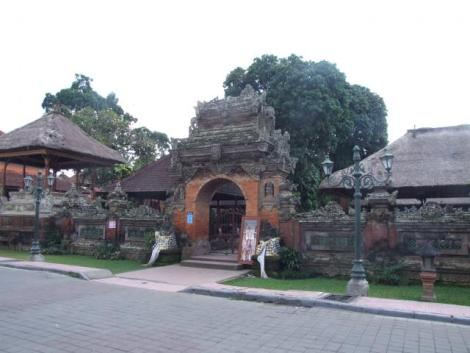Gianyar Regency - Bali Indonesia

The Gianyar regency was home to Bali’s oldest kingdoms,
the Buddhist Warmadewa dynasty in Bedulu – Pejeng that ruled
until the 14th century, and another center in Batuan. The conquering
Javanese set up court in Samprangan, which later moved east to
Gelgel and Klungkung. The area faded in history until the 18th
century when the Klungkung family founded Sukawati as short-lived
dynasty that fell with the rising Gianyar kingdom. Rivals from
Sukawati set up courts in Ketewel, Singapadu, Negara, Peliatan,
Ubud and
Tegallalang which led to decades of warfare.
A powerful Gelgel family in Blahbatuh rose during the 19 the
century, Dutch assistance restored Gianyar, but not without gaining
concessions from the king which spared it the fate of other South
Balinese courts in the early 1900s.
Gianyar has everything from stone carving and daily Barong
Rangda trace dances in Batubulan, Jewelry in Celuk, and huge art
market in Ubud for the best range of souvenirs including locally
made fans and puppets.
Batuan produces fine paintings and masks its temple festivals
feature rate dances. Mas, Kemenuh, Tengkulak, and Pujung are woodcarving
villages, and the Ubud, Peliatan tourist resort area is famous
for paintings and galleries.
Gianyar town produces colorful woven cloth, Blahbatuh as a
foundry where musical instruments are made. Performances of trance
and monkey chant dances are held in nearby Bona, home to palm
leaf crafts and bamboo furniture.
The Bedulu – Pejeng area has Bali’s oldest temples,
including the Goa Gajah (elephant cave), carved relieves at Yeh
Pulu, the huge Samuan Tiga complex, fantastic statues at Kebo
Esan and Pursering Jagat, and the famous bronze moon gong and
coconut-shell carving.
Natural beauty abounds with a huge waterfall at Tegenungan
and spectacular terraced rice-fields at Tegallalang. The Ayung
River offers rafting, and thousands of herons return every
sunset at Petulu.














